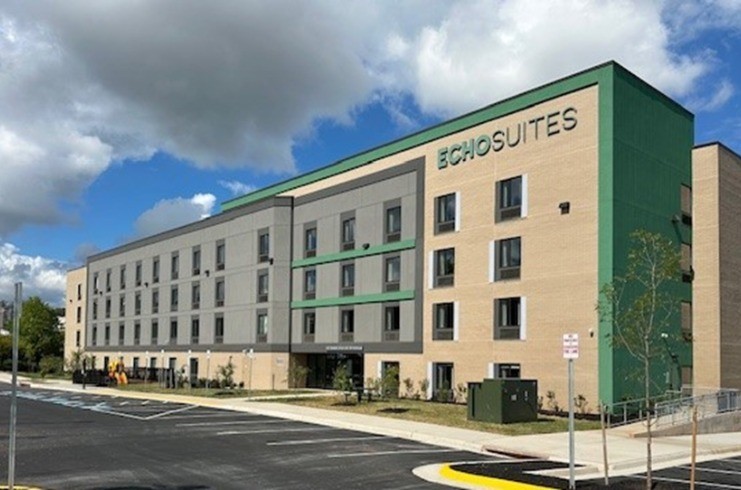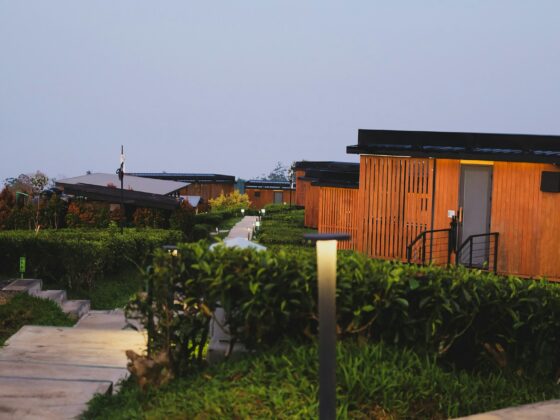
With business travel continuing to rebound—and expected to become a $2.1 trillion market by 2031, according to a recent report published by Allied Market Research®—the time is ripe for hospitality providers to take a fresh look at they way they provide connectivity. Hospitality operators are keenly aware that reliable, ubiquitous Wi-Fi® coverage can make or break a property’s reputation among business travelers, so delivering on this need is critical to ensuring return visits.
Priorities and Provisions
It’s generally accepted that the top priorities for business travelers include reliable connectivity, productivity-supporting amenities and technology-driven convenience and efficiency. A well-implemented enterprise network can help ensure that these priorities are met.
Quality Wi-Fi service is always near the top of the list, and while that may be considered table stakes for any hospitality property, a truly robust, flexible wireless network includes a great deal more than just making sure that emails go through. In addition to the Wi-Fi 7 connectivity that business travelers can access, a cutting-edge network must also support a number of other wireless technologies that support the IT and OT needs of the property. These include Bluetooth®, Zigbee® and other IoT protocols, private 5G cellular and Citizens Broadband Radio Service (CBRS) unlicensed spectrum to drive connected people and devices. Each technology has its particular role and there are countless unique implementation combinations—electronic door locks and contact-free check-ins, for example—which are all designed to provide the seamless, even transparent, personalized hospitality experiences that business travelers crave.
Connected amenities and facilities are also important. From the coziest conference room to the largest presentation hall, robust connectivity must be able to dynamically scale wireless coverage and capacity to meet the needs of that particular event—and just as importantly to hospitality provider, to dial it back for lower-attendance events, or shut it down entirely when unoccupied, reducing energy costs.
And of course, when the workday finally ends, the business traveler wants to enjoy his streamed entertainment without a hint of network buffering.
The Role of AI: Big and Getting Bigger
The key to enabling more powerful, flexible wireless connectivity is the growing opportunities of integrated AI network monitoring and management. Not only can AI react to changing conditions—such as powering down Wi-Fi access points and HVAC services in unoccupied rooms based on bookings data—it can actually learn to predict these patterns to offer proactive recommendations. In fact, AI has reached a level of sophistication that enables virtually autonomous control of granular connected devices to meet human-defined operational goals, and the ability to predict patterns of occupancy based on experience.
AI’s network monitoring and management roles can free up hospitality staff to support the less-technical needs of business travelers and divert IT cost centers to more visible guest amenities and services. Indeed, the integrated mesh of different wireless technologies in modern hospitality networks make AI assistance virtually indispensable.
Technology partnerships make it possible
The scope and scale of connectivity expected from business travelers is beyond the labor and cost profile sustainable by most properties’ own IT staff. AI management takes up much of the slack, but even the AI must be provided and implemented with specialized expertise—and this is why hospitality properties must lean on their technology partners to deliver, configure and support the complex systems required to keep business travelers connected to the office—and to home.
Recent growth in the network-as-a-service (NaaS) IT model has provided countless hospitality clients with an affordable, scalable, flexible way to implement world-class wireless connectivity without the immense overhead of an expended IT staff, or the need for expense or impossible-to-find advance IT expertise in house. As a third-party provided “network in a box,” NaaS is a cloud-based service model that monitors, manages and optimizes an enterprise network remotely.
For hospitality providers, this is an attractive option because configuration, optimization and changes can all be accomplished via software—and scaling up to meet growing need for capacity is often simply a matter of adjusting the service agreement, no additional on-premises IT staff required. NaaS that integrates AI network management can help a property gain that connectivity edge that captures the loyalty of the business traveler, and just as importantly, keep it over the long term by evolving the network to meet changing needs.
Working with a well-suited technology partner can unlock these advantages, quickly and economically, enabling the hospitality provider to focus more resources on what they do best: helping the business traveler feel right at home, even when working from the road.
ABOUT THE AUTHOR
Steven Bronken leads the hospitality strategy and team for RUCKUS Networks at CommScope. With over 24 years of experience, he specializes in guest networks, networking infrastructure, enterprise content management, software development and IT consulting.
© 2025 CommScope, LLC. All rights reserved. CommScope and the CommScope logo are trademarks of CommScope and/or its affiliates in the U.S. and other countries. For additional trademark information see https://www.commscope.com/trademarks. Wi-Fi and Wi-Fi 7 are trademarks of the Wi-Fi Alliance. Zigbee is a trademark of the Connectivity Standards Alliance. Bluetooth is a trademark of Bluetooth SIG, Inc. All product names, trademarks and registered trademarks are property of their respective owners.








